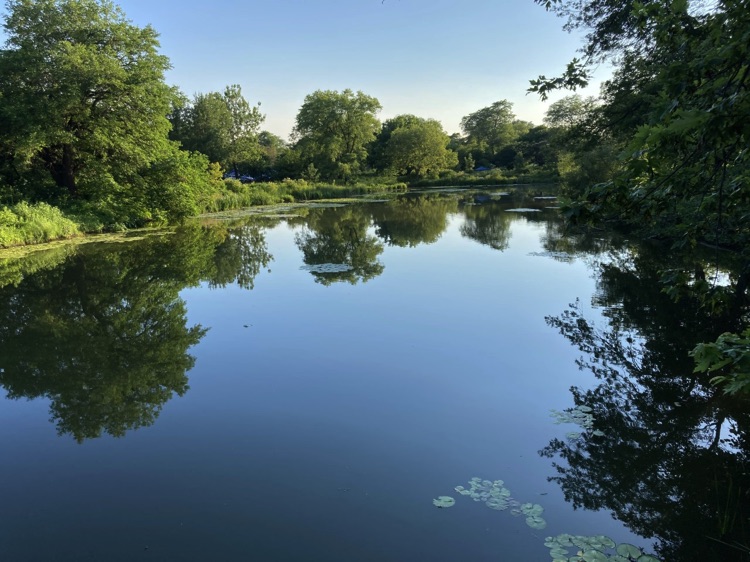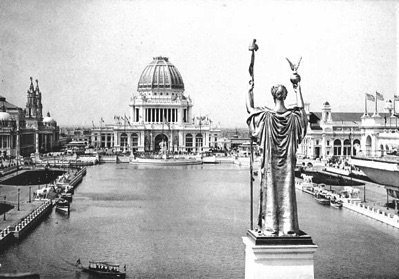Origins and Early Years
Jackson Park began as part of a larger "South Park" of over 1000 acres that was called for by the Chicago Parks Commission in 1869. The area surrounding what is now Hyde Park was at that time still largely rural. The developer Paul Cornell had begun the settlement of Hyde Park in 1853, adjacent to the newly built Illinois Central railway tracks, and by 1861 Hyde Park Township was incorporated, with boundaries far greater than today's (extending to the Indiana state line and far to the south). This area was beginning to attract more settlement, so by 1869 the Commissioners felt establishment of a large park was suitable and engaged the famous landscape architects Frederick Law Olmsted and Calvert Vaux to plan it. In 1871 South Park was divided into three separate parks: the eastern section (about 550 acres), for a time referred to as "Lake Park," was officially designated Jackson Park in 1871. (The other parts of the old South Park became the Midway Plaisance and Washington Park.) Not much was done at first to develop these parcels of the former South Park. The great Chicago fire of October, 1871, which devastated core of the city, diverted attention from development of the then-distant South Side. Jackson Park remained an undeveloped area of swamps, sandbars, and bits of oak savannah.
About Jackson Park
West Lagoon, 5 July 2020. ©Fred M. Donner

The City of Chicago is remarkable for its unrivalled network of over 600 public parks, the largest urban park system in the country. These range from small "playlot" parks providing green space in every neighborhood, to several very large parks, some of them part of the city's famed lakefront park system. Jackson Park, adjoining the Hyde Park, South Shore, and Woodlawn neighborhoods, and fronting on Lake Michigan, is one of the crown jewels of Chicago's park system.
Wooded Island, 19 February 2021. ©Fred M. Donner
The 1893 World's Columbian Exposition
Dramatic change came to the area when the City of Chicago annexed Hyde Park (in its much smaller present boundaries) in 1889, with the foundation of the University of Chicago in Hyde Park in 1891, and especially with the preparations for the World's Columbian Exposition of 1893, which the Exposition planners decided should be situated in the undeveloped Jackson Park. Olmsted and Vaux laid out much of the plan of lagoons and the famous Wooded Island, which they conceived as a nature refuge for fair visitors. Much of the rest of the park was covered by various exhibit and administration buildings for the Exposition, which opened with great fanfare on May 1, 1893, and closed on October 30 of that year.

The original statue of "The Republic" overlooking one of the grand canals at the Columbian Exposition. The present gilded statue at Hayes Drive and Richards Drive is a roughly 1/3 size replica of the original. Photo: Wikipedia.